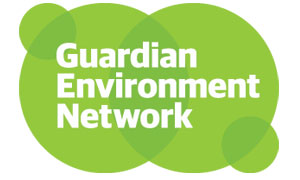Air Pollution and concern about air quality are not new. Complaints were recorded in the 13th century when coal was first used in London. Since the middle of the 19th century, the atmosphere of the major British cities was regularly polluted by coal smoke in winter, giving rise to an infamous mixture of fog and smoke known as smog.
In the 1970s the transboundary effects of industrial air pollution become known as acid rain. Acid rain is a widespread term used to describe all forms of acid precipitation such as rain and snow. Atmospheric pollutants, particularly oxides of sulphur and nitrogen react with water in the atmosphere to form sulphuric and nitric acid, causing precipitation to become more acidic when converted to sulphuric and nitric acids, hence the term acid rain. Acid deposition, acid rain and acid precipitation all relate to the chemistry of air pollution and moisture in the atmosphere. Scientists generally use the term acid deposition but all three terms relate to the same issue.
Acid rain is particularly harmful to vegetation as the acid in the rain changes the pH of the soil and leeches away important minerals. The amount of acid rain that an ecosystem can tolerate is known as its critical load. After the sulphuric and nitric acids have formed in the atmosphere, they can travel long distances with the wind before being deposited. In fact, much of the acid rain found in Scandinavia originated from the UK. In response to these problems, a number of agreements, including the Convention on Long-Range Transboundary Air Pollution (Geneva, 1979), have set out to reduce acid rain.
Although acid rain remains an international concern, poor air quality in cities is now considered to be a more pressing environmental problem. Today poor air quality can be mainly attributed to the production and consumption of energy, industrial processes and road transport. The main pollutants associated with poor air quality are sulphur dioxide (SO2), nitrogen oxides (NOx), particulates (PM10), and volatile organic compound (VOCs). These pollutants can lead to respiratory problems, particularly amongst the young and elderly.
Transport in particular is becoming an increasing source of air pollution. The transport related problems experienced now are likely to worsen according to the projected increase in traffic. Individually, a vehicle engine is not a particularly important source of pollution. Collectively however, vehicles represent a major source of air pollution in the UK and throughout the world. The best way to reduce the threat of air pollution is to use cleaner fuel and less of it, and to adopt more sustainable modes of transport like public transport, walking and cycling.
The UK Government has recognised the problems that air pollution causes for the environment and for society and in 1997 published the first National Air Quality Strategy, setting air quality standards for today and making commitments to achieve new air quality objectives by 2005.
Source : http://www.sustainable-environment.org.uk/Environment/Air_Pollution.php










Tidak ada komentar:
Posting Komentar